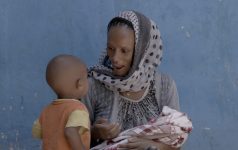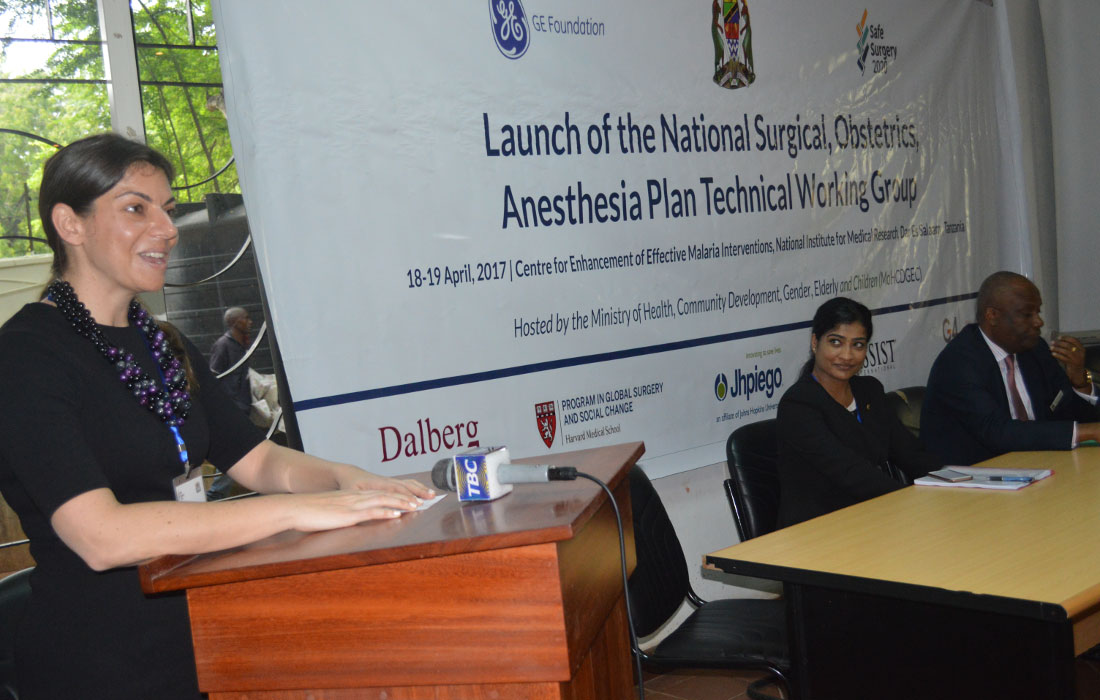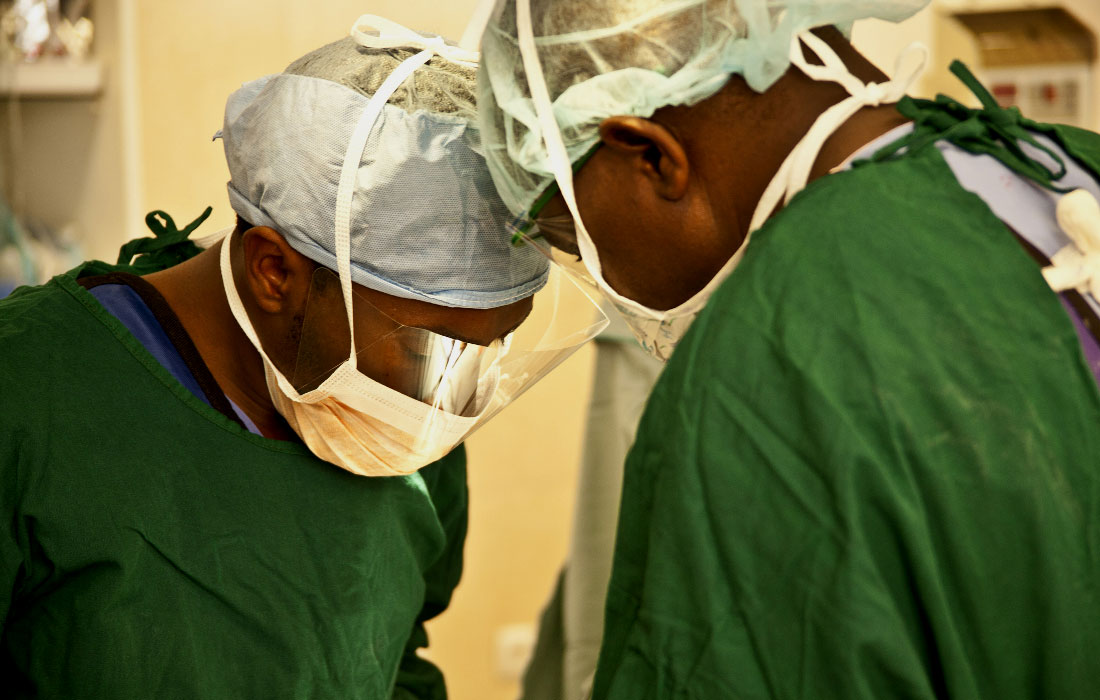Dalberg uses cookies and related technologies to improve the way the site functions. A cookie is a text file that is stored on your device. We use these text files for functionality such as to analyze our traffic or to personalize content. You can easily control how we use cookies on your device by adjusting the settings below, and you may also change those settings at any time by visiting our privacy policy page.
It’s just past noon, and white-coated students bustle across the courtyard of the university hospital. It’s a classic medical school scene, but what’s happening inside one classroom is anything but ordinary. Dr. Henry Mosley, a professor from Johns Hopkins, is coaching physicians and nurses through a series of increasingly absurd tasks. “I’d like all of you to fit your feet on this piece of paper,” the professor says to a group of seven, gesturing toward a letter-size sheet.
Dr. Mosley’s activities illustrate today’s big lesson: surgical teams must think outside the box to create solutions that maximize results, even when resources are scarce and challenges seem daunting, as they often seem here in Tigray, a region in northern Ethiopia.
His exercise in creative problem-solving is a lighthearted way to demonstrate the concept, but Dr. Mosley’s students know firsthand about resource challenges in the operating room. In their cohort, only one of the five hospitals has a surgeon available at least 75 percent of the time. The rest have a cadre of providers called integrated emergency surgical officers trained to perform basic emergency procedures, like cesarean section deliveries and open fracture repairs. There are no anesthesiologists, no radiologists, no pathologists. None of the teams has a CT scanner, and two lack an X-ray machine — meaning that most cases must be referred to another hospital, a potentially fatal delay.
These teams also know firsthand the transformative power of surgery. Globally, increasing access to safe, affordable surgical and anesthetic care could save 1.5 million lives a year and drastically improve the lives of millions more — women whose financial and social opportunities are restored after obstetric fistula surgery, families that can access emergency trauma surgery when their breadwinner is in an accident, children who grow up with a mother because she had the C-section she needed.
According to a recent study in Lancet Global Health, it could take $300–$420 billion to scale up surgical access in low- and middle-income countries between now and 2030 — an enormous sum. While governments and funders are beginning to mobilize resources, and momentum around global surgery has grown rapidly in the past year, in the short term surgical teams will continue to need creative solutions to deliver safe care.
Can leadership development help?
In some places, it already is. Creative problem-solving and leadership are already commonplace at many district hospitals in Ethiopia. Nurses show leadership in patient-centered care by sewing bright privacy curtains to encourage women to deliver at their hospital instead of at home. Pharmacists show leadership in supply-chain management by setting up informal interhospital supply-exchange systems. Many of these solutions are small, innovating around the edges — but as one physician in the Oromia region told us, “The small victories are the big victories.”
Leadership programming amplifies the way people identify and solve problems at their hospitals, and introduce others to the idea that they have the agency — and the mandate — to make a difference. In the often-hierarchical dynamic of the operating room, leadership training especially helps non-surgeons like nurses, non-physician anesthetists and surgical officers. They may perceive that creativity is not rewarded in their position, or may simply lack a change-management skill set — after all, most medical school educations, in Ethiopia and elsewhere, don’t include comprehensive leadership and management training.
Safe Surgery 2020, a multipartner initiative funded by GE Foundation, is trying to fill that gap. We aim to put the power of creative decision-making into the hands of surgical teams by improving their access to leadership programming, mentorship and other hospital-level resources. This week, we are conducting training for another group of surgical teams in the Amhara region, and, in collaboration with the Ministry of Health, we are looking for ways to scale the program nationwide.
Earlier this spring, our partner Jhpiego launched Leadership in Safe Surgery, a five-day classroom course for surgical teams followed by six months of mentorship. Unlike most continuing medical education, students train in full surgical teams to improve teamwork and break down the stereotype that surgeons are the only “leaders” in the OR.
Many ask whether leadership programming as a global surgery intervention is a realistic investment given the sheer volume of resources surgical teams need. Of course, surgical teams also need functional X-ray machines. They need the right needles for administering anesthesia to infants, and residency programs that give them one-on-one access to mentors. And the field of leadership development for surgical teams, especially in low- and middle-income countries, is still new. There are outstanding questions around how it works, what it costs and the impact it has relative to other interventions.
But leadership development is a critical and often overlooked element of change management in hospitals facing resource challenges, and operating rooms around the world — from Chicago to Kigali — are testing the approach. As a recent, well-publicized study in the BMJ reported, medical errors could be the third leading cause of death in the United States, where resources are abundant.
In the case study for one Jhpiego lesson, teams discuss a scenario where an anesthetist’s mistake results in a mother dying during her C-section. It’s obvious who makes the final error, but more digging reveals a pattern of team communication issues that led to the anesthetist feeling isolated, shamed and unable to ask for the help he needed. The facilitator asks, “Who is responsible?”
A participant answers, “Everyone on the team is responsible. We win as a team, we lose as a team.”
For now, we are encouraged by students like these — passionate clinicians developing the tools to influence change. As Dr. Tigistu Adamu Ashengo, associate medical director at Jhpiego, told the group, “Where can we find the answers, a textbook? No. The solutions will come from your hospital. The solutions will come from you.”








